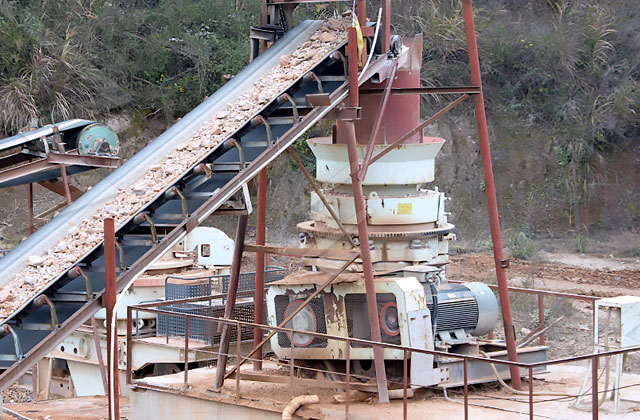A dolomite processing plant typically refers to a facility that crushes, grinds, and screens dolomite rock into various sizes for use in different industries. Dolomite, also known as calcium magnesium carbonate, is a sedimentary rock composed primarily of calcium and magnesium. It is widely used in construction, agriculture, and various industrial applications.
A dolomite processing plant typically consists of several stages, including crushing, grinding, classifying, and product storage. Let’s explore each of these stages in detail:
Crushing: The first step in the dolomite processing plant is crushing the dolomite ore into smaller pieces. Large dolomite rocks are initially broken down into smaller manageable sizes by primary crushers. Common types of crushers used in this process include jaw crushers, impact crushers, and cone crushers. The goal is to reduce the dolomite rocks to a size suitable for further processing.

Grinding: After crushing, the dolomite ore undergoes grinding to further reduce its particle size. Grinding is a crucial step in the dolomite processing plant as it converts the crushed dolomite into fine particles or powder. The grinding process is typically carried out using ball mills, Raymond mills, or vertical roller mills, depending on the specific requirements of the end product.
Classifying: The ground dolomite powder is then passed through a classification process to separate particles of different sizes. This is achieved using classifiers, which are equipment designed to separate materials based on particle size. Classifiers can employ techniques such as sieving, centrifugal force, or air classification to sort the dolomite particles into different size fractions.
Product Storage: Once the dolomite powder has been classified, it is stored in silos or storage tanks. The storage facility ensures that the dolomite products are readily available for shipment or further processing. Dolomite powder can be used directly in various applications or can be further processed into specialized products depending on customer requirements.
In addition to these main stages, a dolomite processing plant may also include auxiliary equipment for handling, transportation, and quality control. This can include conveyor belts, bucket elevators, dust collectors, and screening equipment to ensure smooth operations and product consistency.
The final products from a dolomite processing plant have a wide range of applications. Some common uses of dolomite include:
Construction: Dolomite is widely used as an aggregate in concrete and asphalt mixtures for road construction. It provides strength and durability to the resulting structures.
Agriculture: Dolomite is used as a soil conditioner to neutralize acidic soils and provide essential nutrients, such as calcium and magnesium, for plant growth. It can also improve water retention and enhance the efficiency of fertilizers.
Manufacturing: Dolomite is utilized in the manufacturing of glass, ceramics, and refractory products. It acts as a fluxing agent, helping to reduce the melting temperature of glass and improve its chemical resistance. Dolomite is also used in the production of steel, as a fluxing material to remove impurities.
In conclusion, a dolomite processing plant plays a crucial role in transforming raw dolomite ore into various useful products. The plant involves crushing, grinding, classifying, and product storage stages to obtain the desired particle size and quality. The resulting dolomite products find applications in construction, agriculture, and manufacturing sectors, contributing to various industries’ growth and development.
